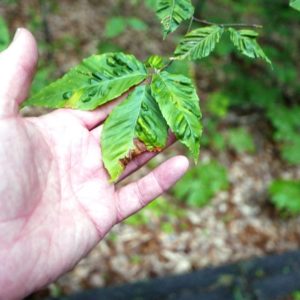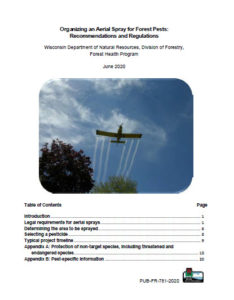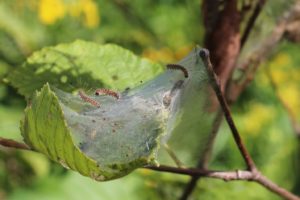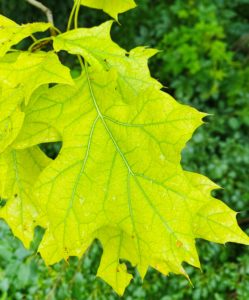By Elly Voigt, forest health lab assistant, Fitchburg
Beech leaf disease (BLD) is a relatively recently discovered, destructive disease of beech trees in the US. It was first observed in 2012 in Ohio and has since spread to areas of Pennsylvania, New York, Connecticut, Rhode Island, Massachusetts and Ontario, Canada. BLD affects our native beech species, American beech (Fagus grandifolia) and ornamental beech species, including European beech (Fagus sylvatica). The disease has not yet been observed in Wisconsin but could become an issue in the future.

Symptomatic leaf puckering of a beech tree with BLD. Credit: Ohio State University.



